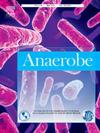孢子形成生物的小型酸溶性蛋白质:功能的异同
IF 2.5
3区 生物学
Q3 MICROBIOLOGY
引用次数: 0
摘要
酸溶性小蛋白存在于所有形成内孢子的生物体中,是孢子的主要成分。通过其 DNA 结合能力,SASPs 可保护 DNA 免受外界损伤(如紫外线和基因毒性化学物质)。缺乏主要的 SASPs 会导致孢子在紫外线照射下存活率降低,至少在一种情况下,孢子无法完成分生。虽然 SASPs 的特征已被描述了几十年,但一些证据表明,利用更新的技术重新审视 SASPs 的作用,可能会发现其在孢子调控中的新功能。本文章由计算机程序翻译,如有差异,请以英文原文为准。
The small acid-soluble proteins of spore-forming organisms: Similarities and differences in function
The small acid-soluble proteins are found in all endospore-forming organisms and are a major component of spores. Through their DNA binding capabilities, the SASPs shield the DNA from outside insults (e.g., UV and genotoxic chemicals). The absence of the major SASPs results in spores with reduced viability when exposed to UV light and, in at least one case, the inability to complete sporulation. While the SASPs have been characterized for decades, some evidence suggests that using newer technologies to revisit the roles of the SASPs could reveal novel functions in spore regulation.
求助全文
通过发布文献求助,成功后即可免费获取论文全文。
去求助
来源期刊

Anaerobe
生物-微生物学
CiteScore
5.20
自引率
8.70%
发文量
137
审稿时长
76 days
期刊介绍:
Anaerobe is essential reading for those who wish to remain at the forefront of discoveries relating to life processes of strictly anaerobes. The journal is multi-disciplinary, and provides a unique forum for those investigating anaerobic organisms that cause infections in humans and animals, as well as anaerobes that play roles in microbiomes or environmental processes.
Anaerobe publishes reviews, mini reviews, original research articles, notes and case reports. Relevant topics fall into the broad categories of anaerobes in human and animal diseases, anaerobes in the microbiome, anaerobes in the environment, diagnosis of anaerobes in clinical microbiology laboratories, molecular biology, genetics, pathogenesis, toxins and antibiotic susceptibility of anaerobic bacteria.
 求助内容:
求助内容: 应助结果提醒方式:
应助结果提醒方式:


